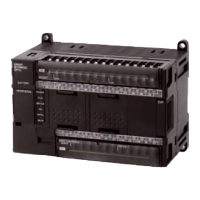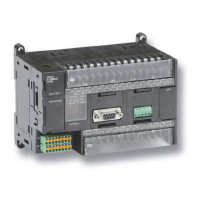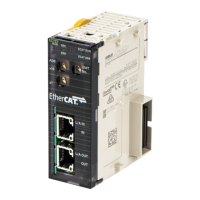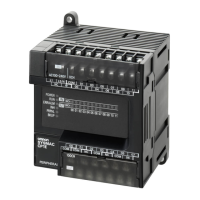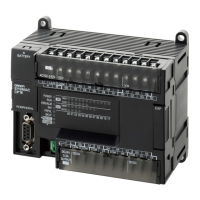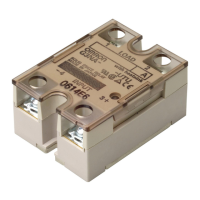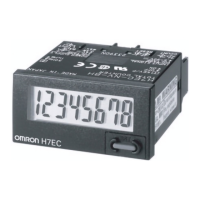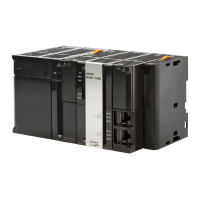102
Fail-safe Circuits Section 4-1
4-1 Fail-safe Circuits
You must set up safety circuits outside of the PC to prevent dangerous condi-
tions in the event of errors in the PC or external power supply.
!WARNING Take any safety measures necessary outside of the PC to ensure the safety of
the system in the event of an error due to PC malfunction or external factors.
Observe the following precautions. Failure to do so could lead to serious or
possibly fatal injury.
• Provide interlock circuits, limit circuits, emergency stop circuits, and simi-
lar safety measures in external circuits (i.e., not only in the Programmable
Controller).
• Operation will stop and all outputs will turn OFF when the PC detects an
error or when a FALS(07) (fatal error) instruction is executed. You must
take any safety measures necessary outside of the PC to ensure the
safety of the system in the event that all outputs turn OFF.
• It is possible for an output to remain ON or OFF due to a malfunction in
the internal circuits of an Output Unit, such as a relay or transistor mal-
function. Provide any circuits necessary outside of the PC to ensure the
safety of the system in the event that an output fails to turn OFF or ON.
• If there is an overload or a short-circuit in the PC’s 24-V DC service power
supply, the voltage may drop and the outputs may turn OFF. Take any
safety measures necessary outside of the PC to ensure the safety of the
system in the event that outputs turn OFF.
Supply Power to the PC
before Outputs
If the PC’s power supply is turned ON after the controlled system’s power sup-
ply, outputs in Units such as DC Output Units may malfunction momentarily.
To prevent any malfunction, add an external circuit that prevents the power
supply to the controlled system from going ON before the power supply to the
PC itself.
Managing PC Errors When any of the following errors occurs, PC operation will stop and all outputs
from Output Units will be turned OFF.
• Operation of the Power Supply Unit’s overcurrent protection circuit
• A CPU error (watchdog timer error)
• A fatal error* (memory error, no END(01) instruction error, I/O bus er-
ror, too many I/O points error, or FALS fatal system error)
Be sure to add any circuits necessary outside of the PC to ensure the safety
of the system in the event of an error that stops PC operation.
Note *When a fatal error occurs, all outputs from Output Units will be turned OFF
even if the IOM Hold Bit has been turned ON to protect the contents of I/O
memory. (When the IOM Hold Bit is ON, the outputs will retain their previous
status after the PC has been switched from RUN/MONITOR mode to PRO-
GRAM mode.)
Managing Output
Malfunctions
It is possible for an output to remain ON due to a malfunction in the internal
circuitry of the Output Unit, such as a relay or transistor malfunction. Be sure
to add any circuits necessary outside of the PC to ensure the safety of the
system in the event that an output fails to go OFF.
Emergency Stop Circuit The following example emergency stop circuit controls the power supply to
the controlled system so that power is supplied to the controlled system only
when the PC is operating. Program the Always ON Flag (SR 25313) as the
execution condition for an output point from an Output Unit and use this point
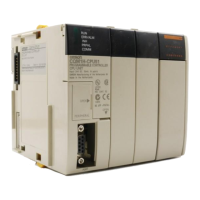
